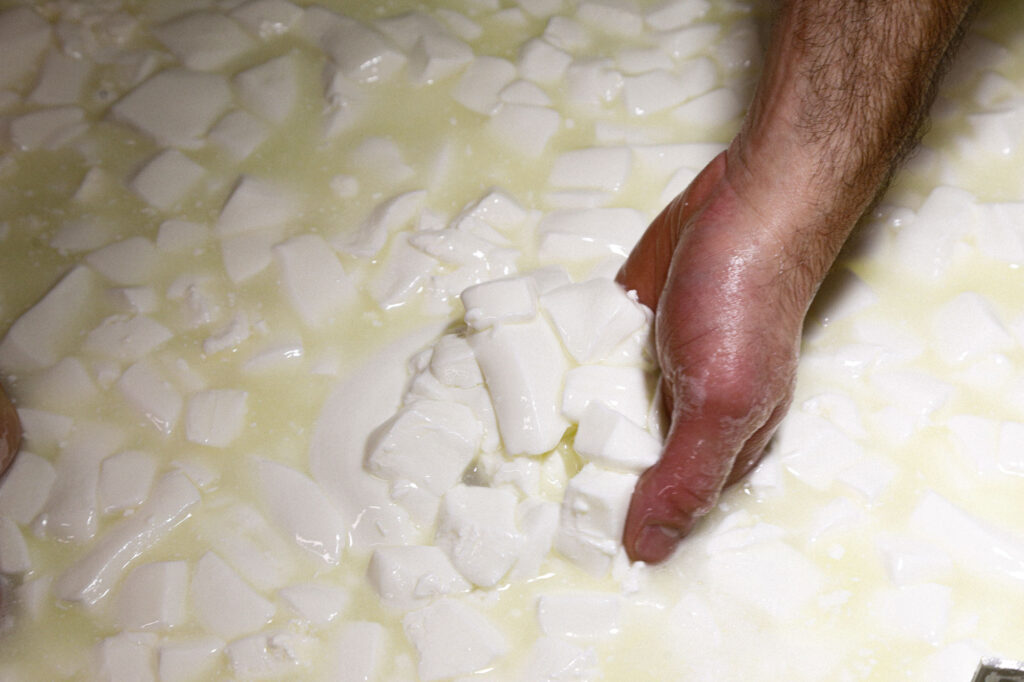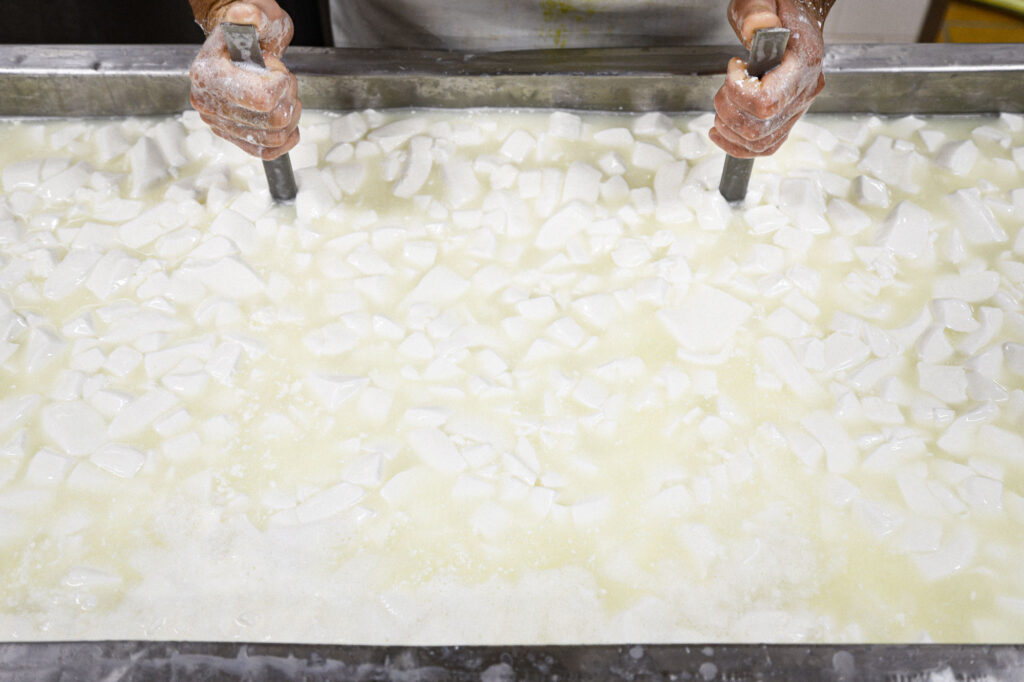How is milk turned into cheese?
How does milk become cheese?
Today we talk about just that.
One of the questions we get asked most by you is how is it possible for a liquid food
How milk can then become solid by turning into cheese.
Milk to be made into cheese requires coagulating agents : they will be responsible for the transition of milk from liquid to solid state.
Such agents can be of different natures: animal, plant, microbial.
The main coagulant of an animal nature that we will discuss is certainly rennet, also called rennet.

Rennet is an enzyme complex extracted from the 4th stomach (called abomasum) of ruminant infant animals such as lamb, kid, and calf.
Its function is to coagulate the caseins (main protein) by combining them into a semisolid state, from which, once the whey (remaining liquid part) is drained, processed or ripened, the cheese will originate.
The term rennet is also improperly extended to refer to other substances with coagulant activity, such as thistle, artichoke. In these cases, however, we will talk specifically about vegetable rennet.
In the case of molds, on the other hand, we will talk about microbial rennet.
In addition to these substances, casein coagulation, although milder, can occur naturally by acidification of the milk due to microorganisms in the milk.
Clearly, coagulation by rennet (presamic) results in a compact and more structured clot.
In addition, coagulation times are faster with optimal temperatures between 35°/40°C.
Rennet can be found commercially in a solid state (powder or freeze-dried), liquid or paste form.
Each rennet is used specifically for the production of certain cheeses.
For example, the powdered one is used for the production of cheeses with pushed seasoning; the liquid one for fresh cheeses; the paste one for strong, spicy cheeses.
Each rennet has a “titer,” a parameter that indicates its strength, that is, the number of milk particles that a particle of rennet can coagulate.
Let’s take an example: rennet titer 1:18,000 means that 1cc of rennet can coagulate 18,000cc of milk in 40 minutes at a temperature of 35°C.
Animal rennet mainly contains 2 enzymes: chymosin, the most important, and pepsin, whose
proportions depend on the animal’s diet and age.
The younger the animal, the higher the concentration of chymosin.
Conversely, the abomasum of an adult animal will contain almost all pepsin.

Rennet coagulates very well at temperatures around 40/42°C; while it completely loses
its coagulating powers when it exceeds 55/60°C or goes below 10/15°C.
Indeed, its storage is very important: it is very sensitive to light and must be
kept at temperatures between 7 and 13°C, as well as being stored in places
dry.
Finally, it should be mentioned that rennet loses 5% to 10% coagulating power every year.
